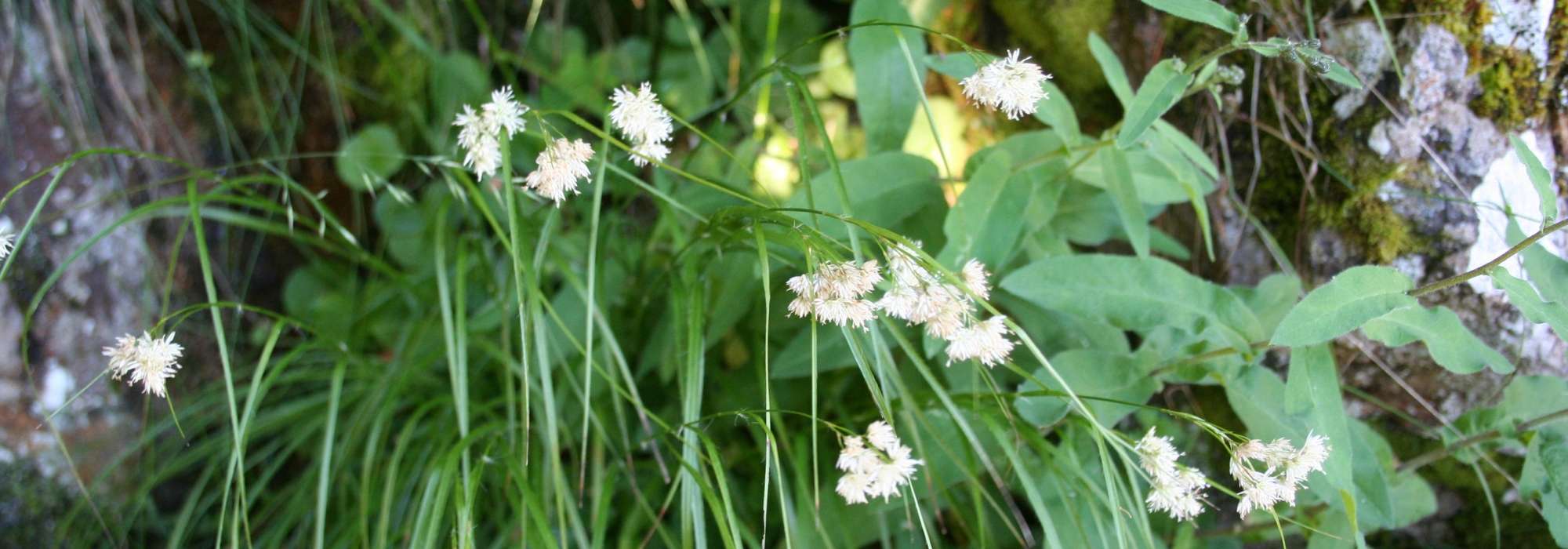
Woodrush: planting, cultivation and care
Contents
Luzula in a nutshell
- Luzula is a perennial groundcover with a very natural look, resembling grass.
- Its evergreen foliage is green, grey or variegated.
- Iconic in shade, it is ideal for hard-to-plant areas, even among tree roots.
- It grows in dense clumps with a loose habit and flowers from spring to early summer.
- Hardy and robust, it has no enemies, requires almost no maintenance and even tolerates dry shade.
A word from our expert
La Luzula (a Juncaceae often listed among grasses) is a very effective groundcover perennial in shade. Its thick, evergreen foliage can be green, grey or golden. Variegation is also present on some varieties such as Luzula sylvatica ‘Marginata’.
Flowering, in the form of umbels, occurs in spring, in shades of green or various browns, sometimes tinged with orange. It is borne on upright stems, some of which reach 60 cm.
Growing in loose tufts, it spreads by rootstocks and can quickly form a tapetum that establishes even between tree roots.
Undemanding regarding soil type, it tolerates fresh to dry soils, even poor ones. However, it does not appreciate overly calcareous soils.
Very hardy and robust, Luzula is a trouble-free plant that requires very little maintenance and has no pests.
Easy to grow, it is suitable both for difficult-to-plant areas of the garden and for container use.
Description and botany
Botanical data
- Latin name Luzula
- Family Juncaceae
- Common name Luzula
- Flowering April to July
- Height 20 cm to 60 cm
- Exposure Shade, partial shade
- Soil type humus-bearing, neutral to acidic
- Hardiness -15°C and beyond
Luzulas represent around 80 species of perennial plants native to temperate and cold regions worldwide, mainly in Europe and Asia. They occur in woodland on rich soil but also along waterways, in acid heathland or in mountain pastures.
Often mistaken for grasses, these groundcovers are in fact members of the Juncaceae, like the rush that gave the family its name.
Luzulas share with grasses leaves with a flat lamina as well as leaf sheaths. Evergreen, their leaves are often thick and coriaceous and fringed with a down or cilia along the margin. Some display a clear green while others are greyish or show
Luzulas form basal clumps with a graceful habit, reminiscent of some Carex.
Flowering begins in spring, in panicles or umbels, green or variously pale brown, borne at the top of erect stems that can reach 60 cm in height.
Growth rate varies by species, but these rhizomatous perennials are valued for their ability to cover soil and limit the growth of adventive plants. Woodland-loving, their rather shallow rooting allows them to grow between tree roots, where few other plants can thrive. While they prefer rich and fairly moist soils, they also perform very well in poorer soil and in dry shade, provided they are not exposed to too much calcareous material. Neutral and acidic soils are to be favoured.
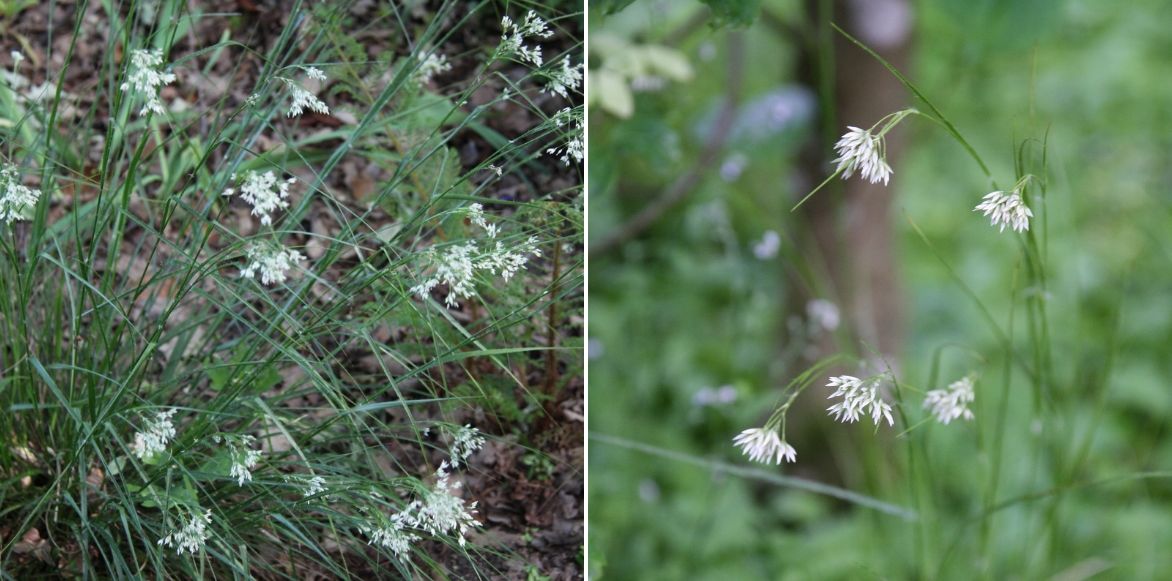
Lovely airy flowering of Luzula nivea
Very hardy (at least -15°C), Luzulas are very easy to grow and particularly robust. They have virtually no pests or diseases. Maintenance is limited to the occasional removal of dead foliage at the end of winter.
Luzula is one of the best groundcovers for shade and partial shade, it unmistakably defines woodland atmospheres. Undemanding and offering a permanent display, it also sits naturally in pots on shaded terraces or balconies.

Several decorative foliage: Luzula nivea, Luzula sylvatica ‘Marginata’, Luzula sylvatica ‘Solar Flare’
Different varieties of Luzules

Luzula sylvatica
- Flowering time May to July
- Height at maturity 30 cm
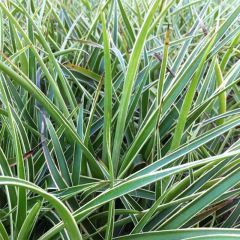
Luzula sylvatica Marginata
- Flowering time May to July
- Height at maturity 40 cm
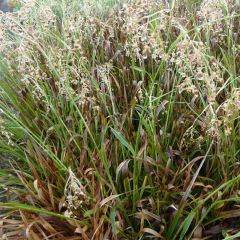
Luzula sylvatica Surprise
- Flowering time May to July
- Height at maturity 30 cm
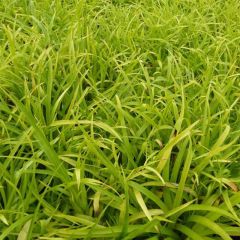
Luzula sylvatica Solar Flare
- Flowering time May to July
- Height at maturity 40 cm

Luzula nivea
- Flowering time June to August
- Height at maturity 60 cm
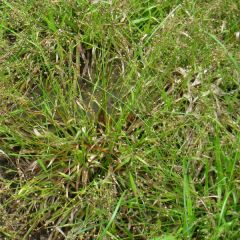
Luzula pilosa
- Flowering time June to August
- Height at maturity 20 cm
Discover other Luzula
View all →Available in 2 sizes
Available in 2 sizes
Available in 2 sizes
Available in 1 sizes
Available in 1 sizes
Available in 1 sizes
Available in 2 sizes
Planting woodrushes
Where to plant Luzula?
Luzula are woodland perennials. They should be sheltered from strong, direct sunlight. They prefer rich, deep, moist soils but also do very well in poorer, drier soils. Prefer neutral to acidic soils but avoid overly calcareous soils which they do not like.
Use them to green awkward areas of the garden, for example by planting them among the roots of trees and bushes where nothing else grows.
Grow Luzula in a pot to create a lasting display on balcony or terrace.
When to plant?
Plant Luzula preferably in autumn (between September and November) or between February and April.
How to plant?
Planting in ground :
- Start by soaking the rootball in plenty of water so the substrate is thoroughly moistened.
- Dig a hole 20 to 30 cm all around. If planting among roots of trees or bushes, take care not to damage those roots as this can weaken the tree or encourage new roots that will compete with your perennial. If necessary, stick to a smaller hole or try a little further away.
- In heavy, clay soil, mix some compost into the excavated soil.
- Add a handful of well-rotted compost to help the plant get established.
- Partially fill the hole with your mix then set the plant in place, after removing it from its bucket, so that its base sits level with the soil surface.
- Water generously.
- Mulch around the plant with dead leaves, dry grass clippings, woodchip (BRF) or commercial mulch to a depth of a few centimetres.
- In the weeks that follow, and depending on weather, ensure the substrate does not dry out. Once established, Luzula generally relies on rainfall. Water only in case of severe, prolonged drought.
Pot planting :
- Choose a pot at least 30 cm each way. Ensure it has at least one drainage hole at its base. Place over this hole one or more old pieces of broken terracotta for example so it does not become blocked by watering.
- Soak the rootball in a basin or a bucket so it becomes saturated with water.
- Meanwhile, make a mix of garden soil with one to two handfuls of compost. If your soil is too calcareous or you do not have any, use a good-quality potting compost.
- Partially fill the container with your substrate then, after removing the plant from its bucket, place it in.
- Top up with your mix until it reaches the same level as the rootball.
- Leave 2 to 3 cm between the compost and the top of the pot to allow for watering.
- Apply the mulch of your choice (mineral, such as gravel, or organic such as bark, hemp or flax fibres to name a few).
- Water abundantly to secure the plant in place.
- Place your pot in the appropriate position (partial shade to shade). We recommend positioning it where it will remain before filling and watering; you may find it hard to move once planted, especially if the pot is large.
→ Find out more in our care sheet : How to grow a luzula in a pot ?
Caring for woodrushes
Hardy and easy to care for, Luzulas require almost no maintenance. If necessary, at end of winter, you can remove parts of the plant that have dried and are less decorative. If you wish to avoid spontaneous sowings, cut flower stems at end of flowering, before they set seed.
As with all plants, regular watering during first weeks helps plant establish well. If natural rainfall is insufficient, water occasionally.
An annual application of compost in spring helps maintain nutrients appreciated by Luzula, but it can tolerate poor soil such as that found at base of trees, where roots represent strong competition.
Once well established, Luzula spreads slowly. To prevent it from thinning at centre, cover plant’s crown with a few centimetres of soil mixed with potting compost so it retains good density.
In a pot, your Luzula plant may, after some time, feel a little cramped. In that case, lift it out and divide it. You can then either replant divisions or give them away.
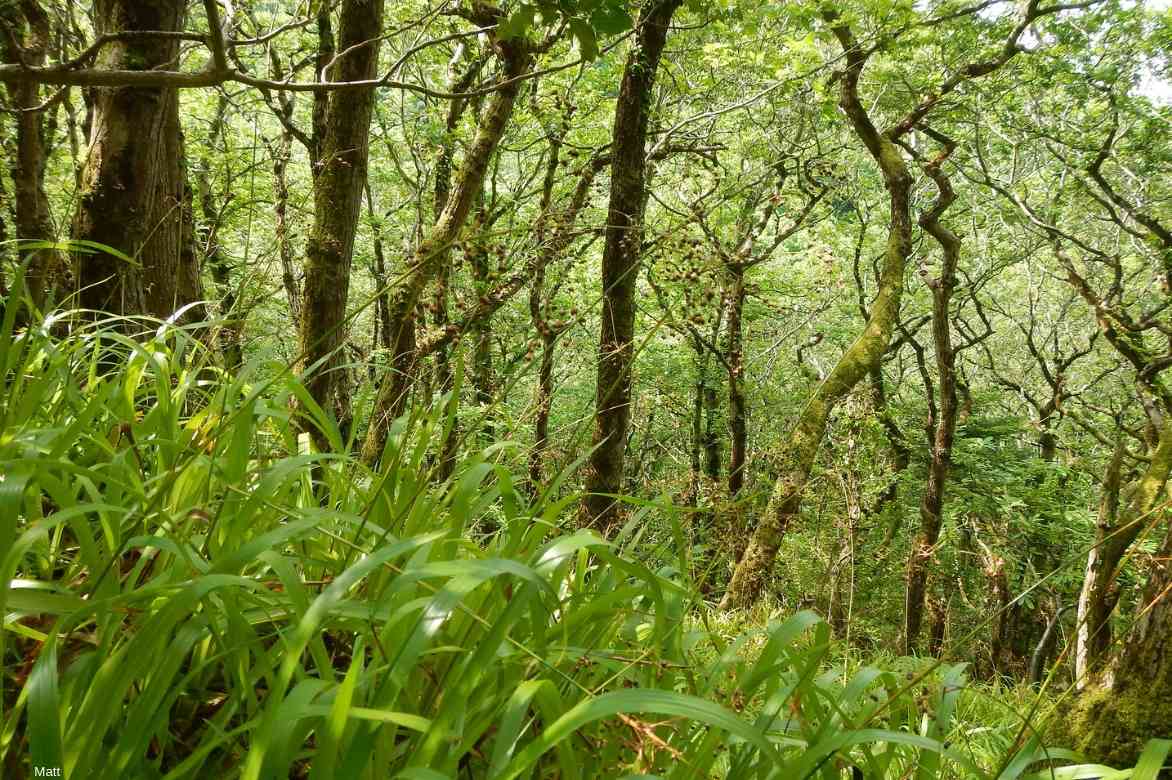
Luzula sylvatica in woodland
Propagating woodrush
Luzula can self-seed naturally, allowing you to obtain young plants. However, to propagate it we recommend clump division (in spring or autumn)
Clump division
Divide luzulas in autumn or spring when plants are well established. It rejuvenates the clump, which can thin out slightly in its centre over time.
- Start by lifting the clump out of the soil using a spade.
- Slice this stump into several pieces using your spade or a sharp knife.
- Replant the pieces immediately in the chosen spot.
- Water thoroughly at planting, then regularly for the first few weeks to help the plant establish.
Companion planting with woodrushes
Enhance natural woodland feel conveyed by Luzula by pairing it with Ferns, Wild anemones and Carex. Clumps of Ophiopogons with black foliage create striking contrasts.
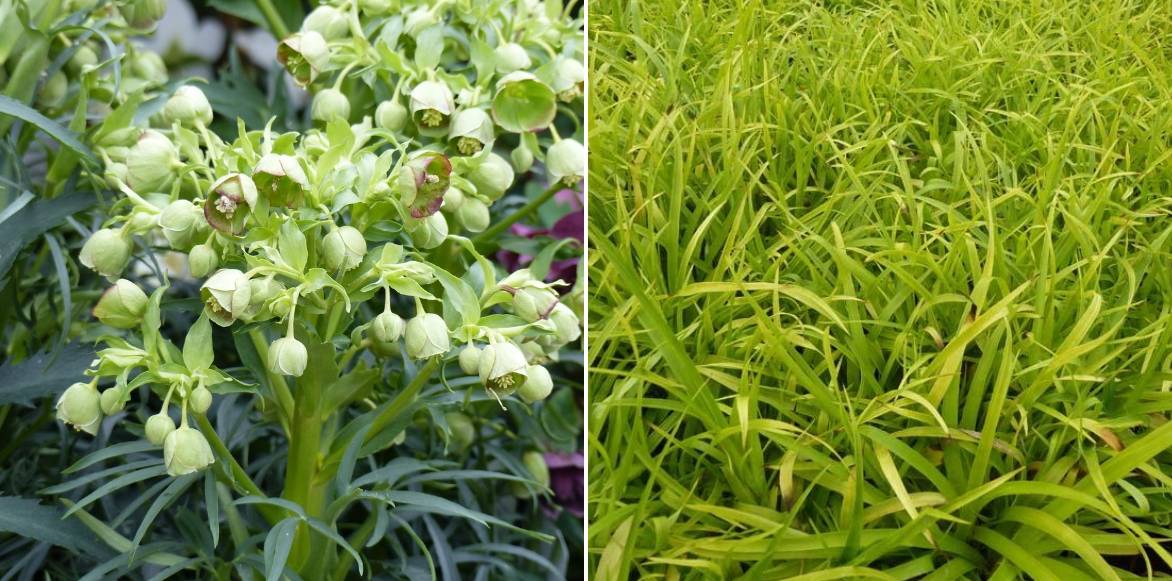
A planting idea for late winter: Helleborus foetidus ‘Sopron’ and Luzula sylvatica ‘Solar Flare’
L’Aster divaricatus is a good companion that brings a lovely touch of colour, as do Geranium macrorrhizum and Hellebores.
In fresh soil, Hostas, Hakonechloas and Heucheras offer a lovely palette of coloured foliage for more sophisticated combinations.
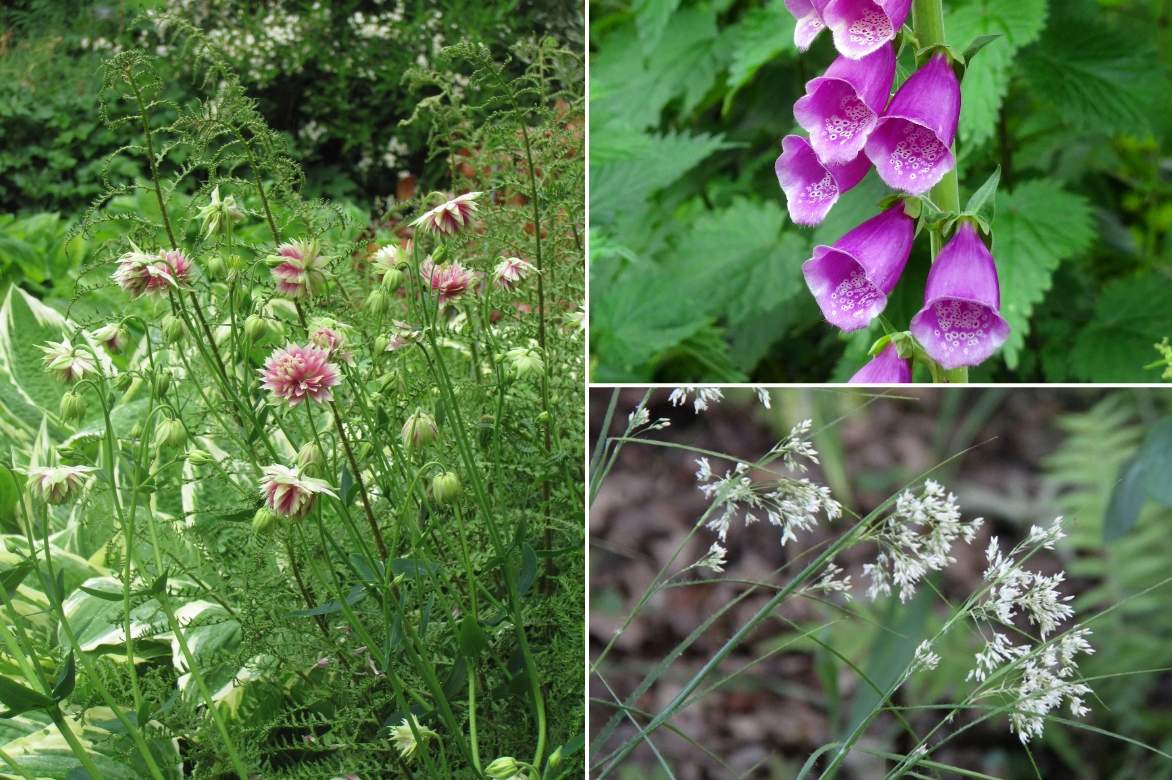
A planting idea for partial shade: Aquilegia vulgaris ‘Nora Barlow’, Dryopteris filix-mas ‘Linearis Polydactyla’, Hosta fortunei ‘Patriot’, Digitalis purpurea and Luzula nivea
Don’t forget early bulbs that flower from early spring.
Luzulas are also suitable for mass planting under trees, in neglected areas of the garden where you wish to intervene as little as possible.
Did you know?
Beech woods with woodrushes are one of the forest landscapes found in regions of Europe with a cool, humid climate. Composed mainly of beech (Fagus), they develop naturally on hilly ground and lower mountain areas. The soil there is generally acidic and poor, rather cool without being overly wet.
Although beech predominates, it can be accompanied by other essential oils such as oaks, sycamore maples, hornbeams or birches. In understoreys of these densely shaded forests, vegetation is generally sparse. Hazel or hornbeam occur depending on soil richness, and in the lower nival zone the herbaceous layer develops mosses, but also wavy hair-grass (Deschampsia flexuosa), bracken ferns and bilberries (in brighter gaps) and white woodrush (Luzula nivea) where light is subdued.
Human management of these forests influences their physiognomy. Felling operations, sometimes involving replacement by other essential oils, removal of old stumps and dead wood, and soil compaction caused by use of heavy machinery alter the balance of the medium. Climate, drier and warmer, also plays a role in these changes.
These changes impact fauna and flora that originally populated these wooded areas and which tend to be endangered.
Useful resources
- Discover our range of Luzulas!
- Our video tips: How to plant perennials?
- For shaded areas, we offer a wide range of woodland plants.
- Subscribe!
- Contents
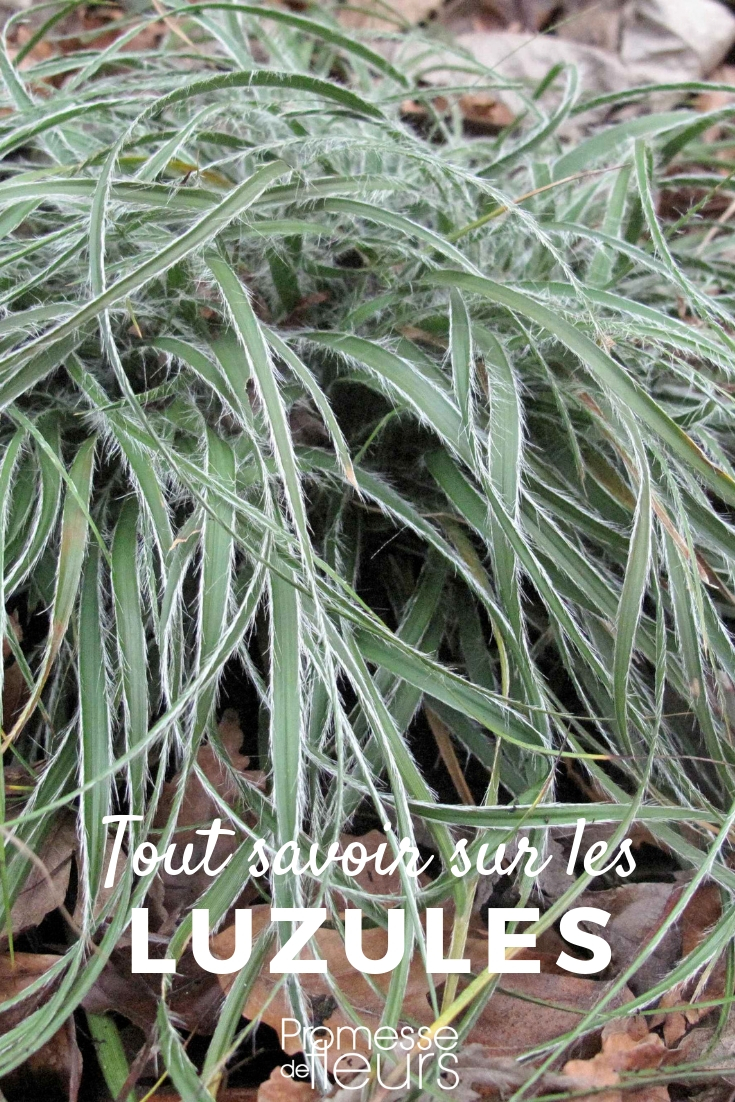
































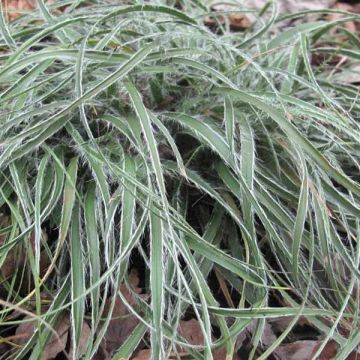
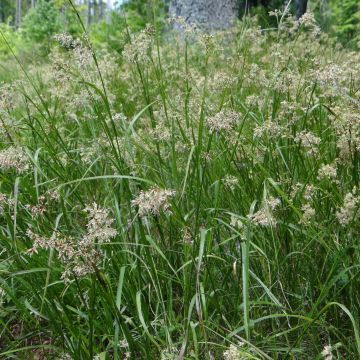
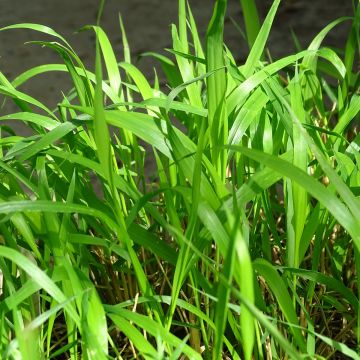



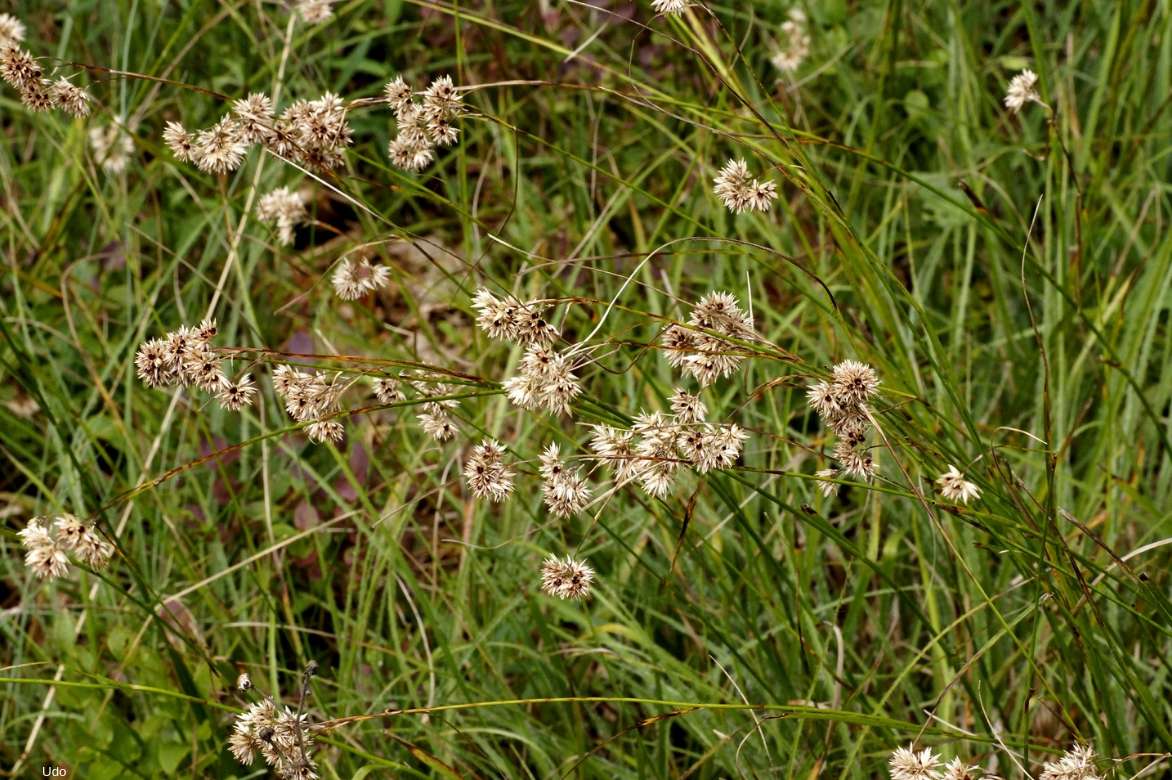
Comments